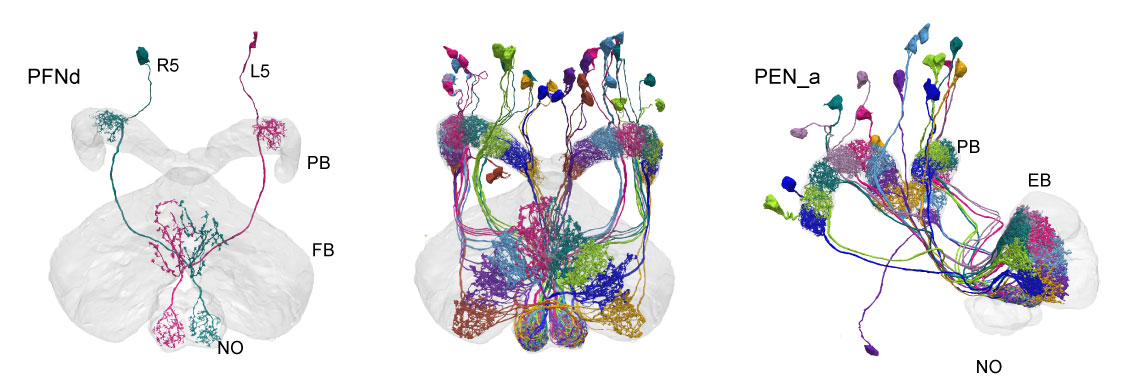A connectome of the Drosophila central complex reveals network motifs suitable for flexible navigation and context-dependent action selection
Brad K. Hulse, Hannah Haberkern, Romain Franconville, Daniel B. Turner-Evans et al.
bioRxiv. December 2020
CLIENT
Jayaraman Lab, HHMI Janelia
TOOLS
Adobe Illustrator, Adobe Premiere Pro, neuPrint, neuTu, neuVid, Blender, Cytoscape
DATA
Hemibrain connectome (Scheffer et al. 2020)
Contributions
- Generated a catalog of 3D renderings for all neuron types in the Drosophila central complex (CX)
- Created additional renderings to display specific circuit components
- Produced animation to introduce the central complex brain regions and visualize an example pathway through the CX
- Make 6 animations to show CX output pathways
- Contributed to graphic design and layout on select figures
- Standardize design elements across figures to make cohesive publication
Paper Summary
The Central Complex (CX) is an extensively studied area in the brain of Drosophila Melanogaster linked to orientation and navigation. This paper uses the hemibrain connectome to describe all CX neurons and circuits at synaptic resolution. It details insights revealed by the hemibrain connectome, including novel cell type, sensory input and motor output pathways, and network motifs underlying navigational computation.











